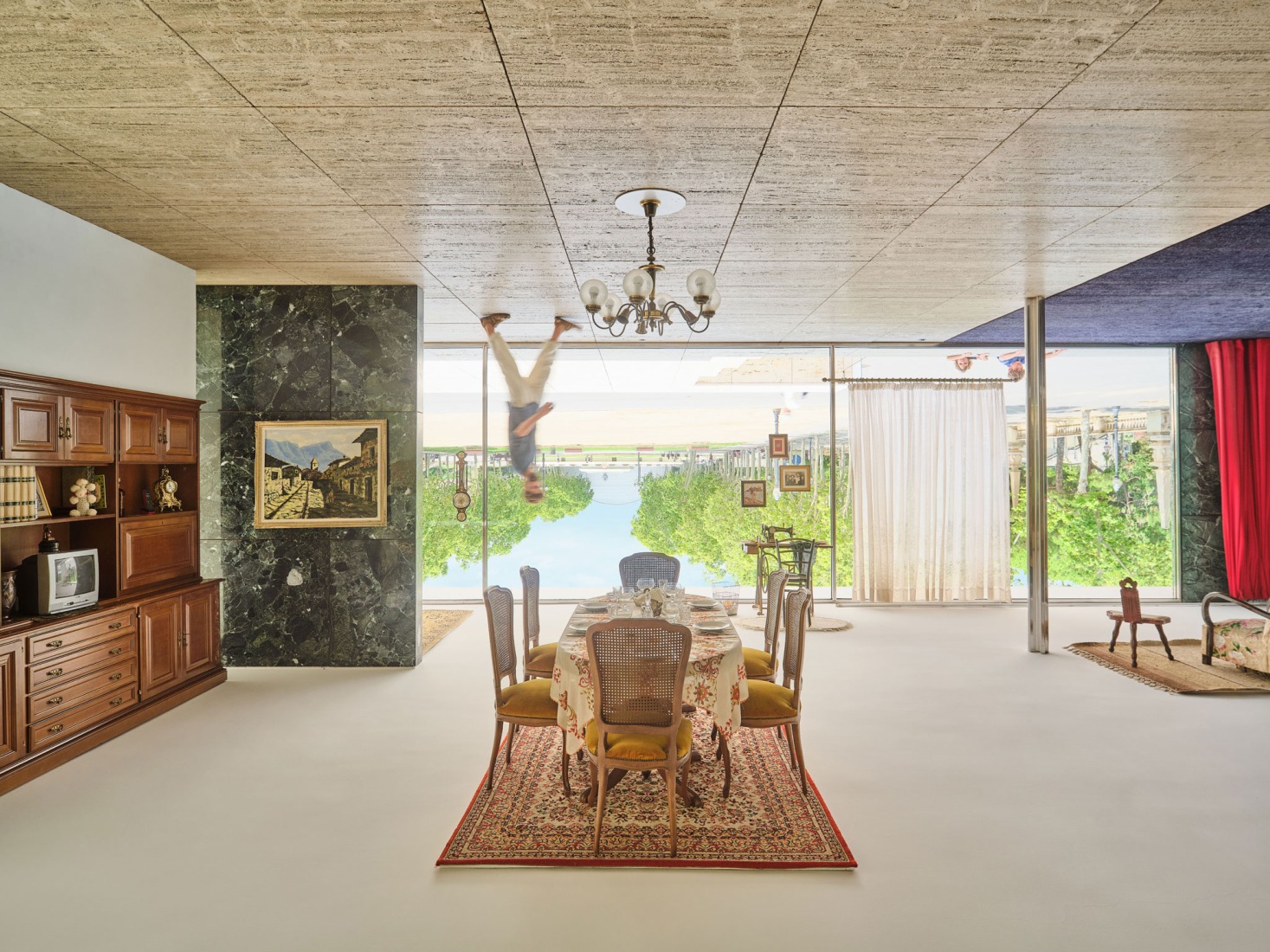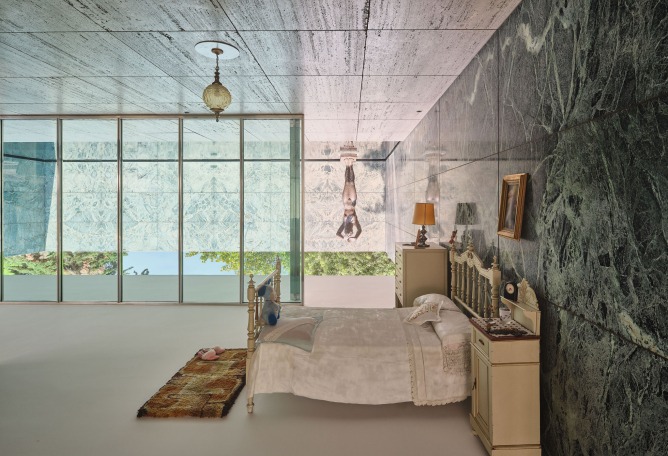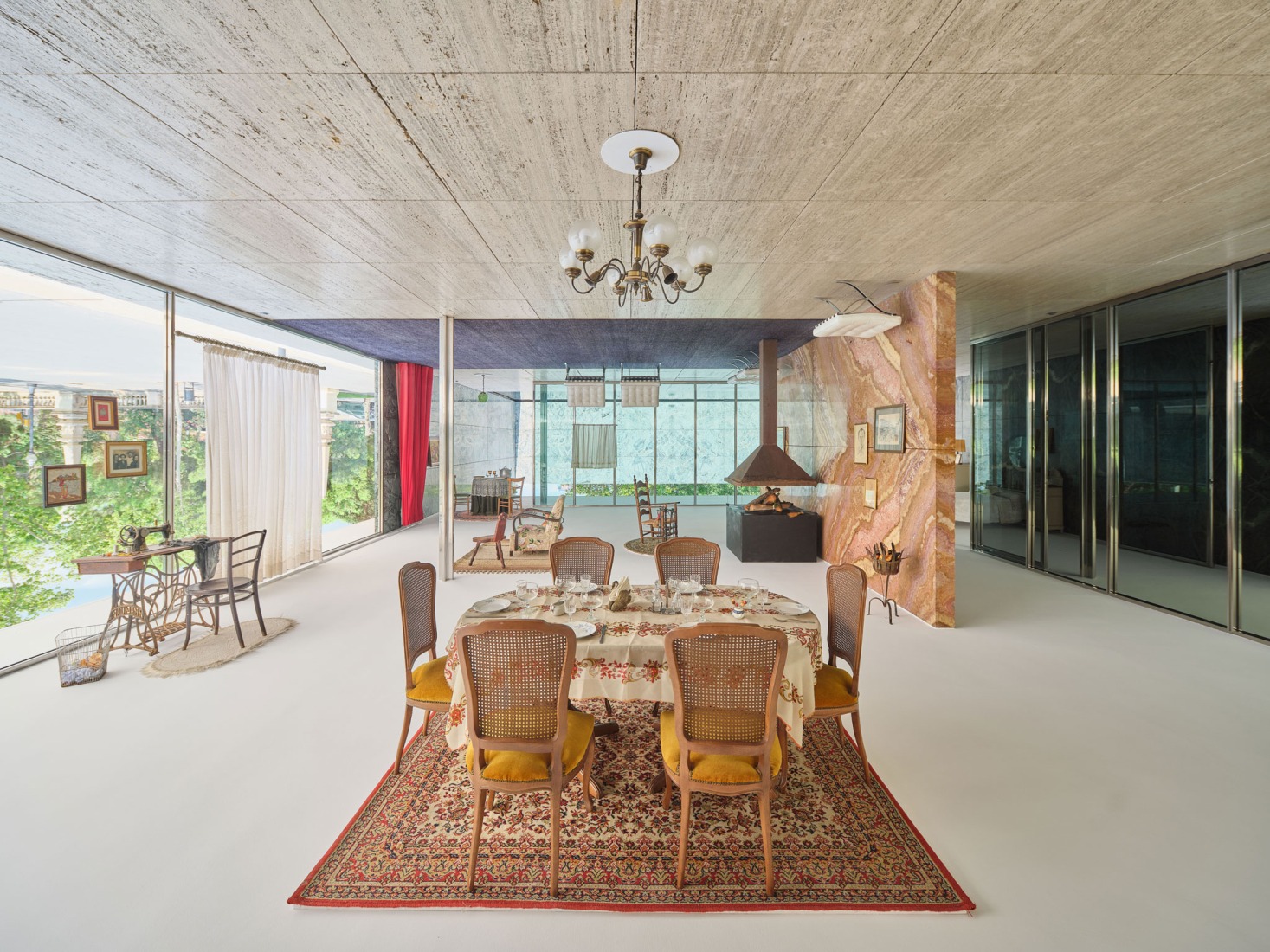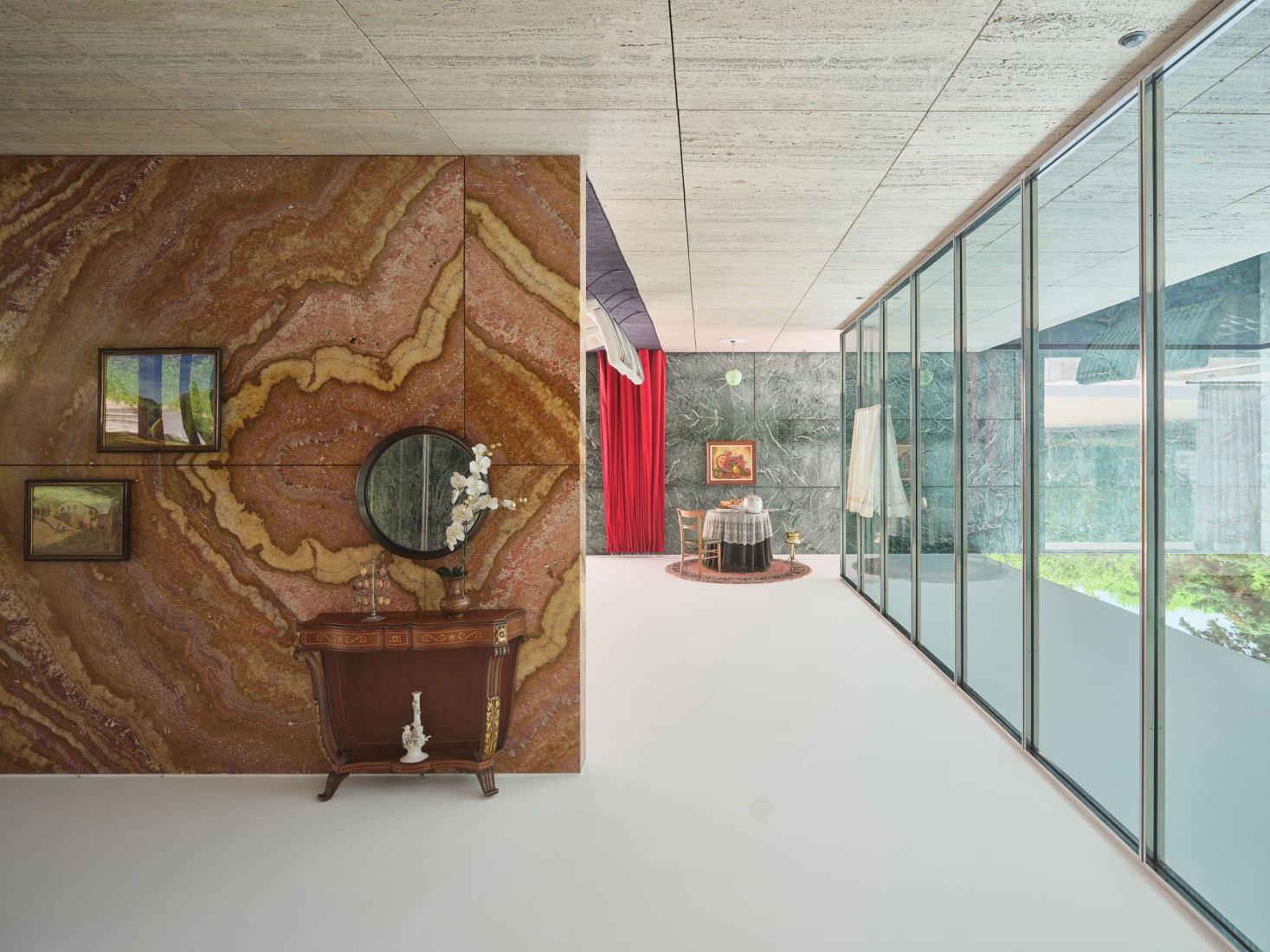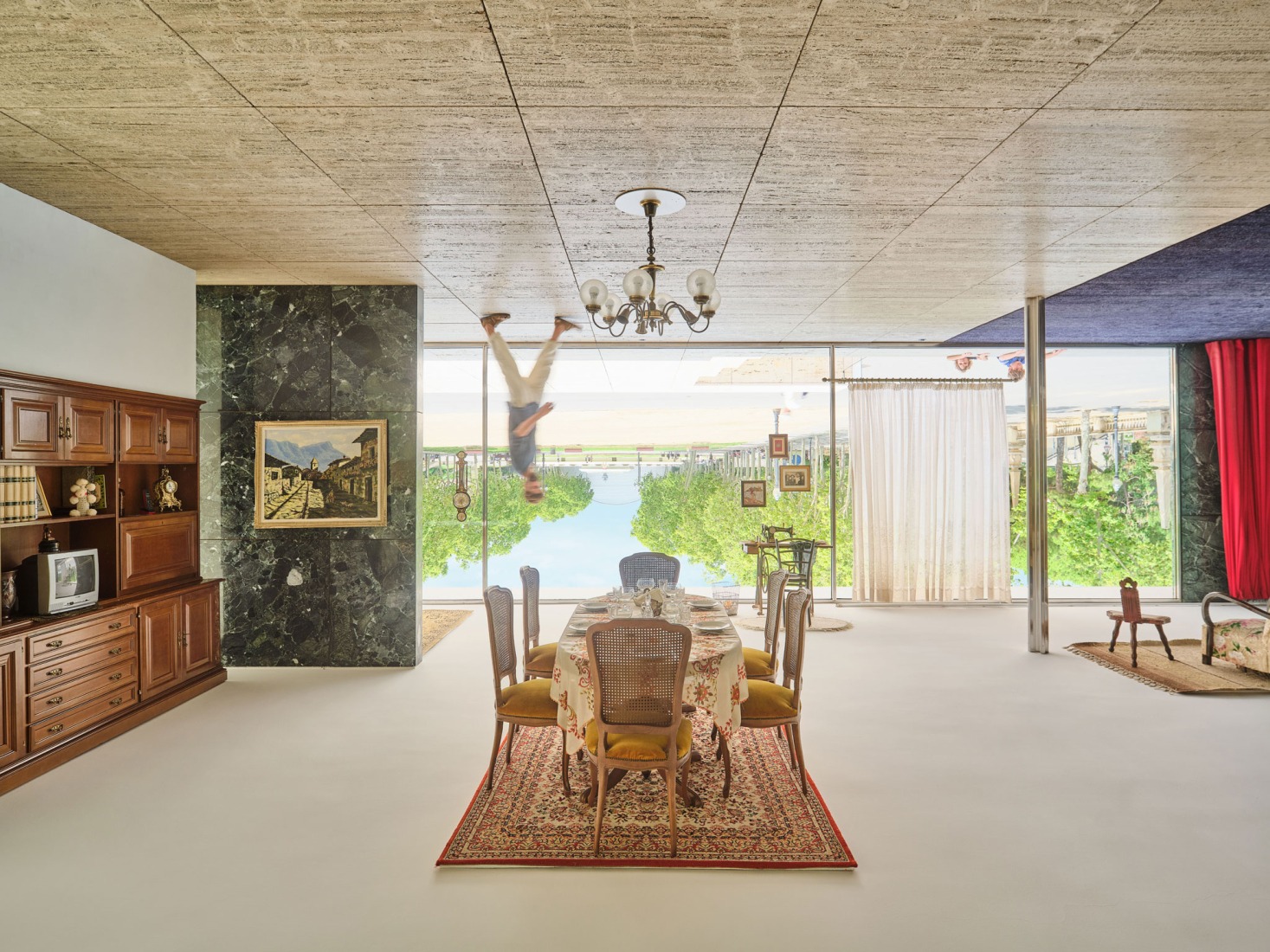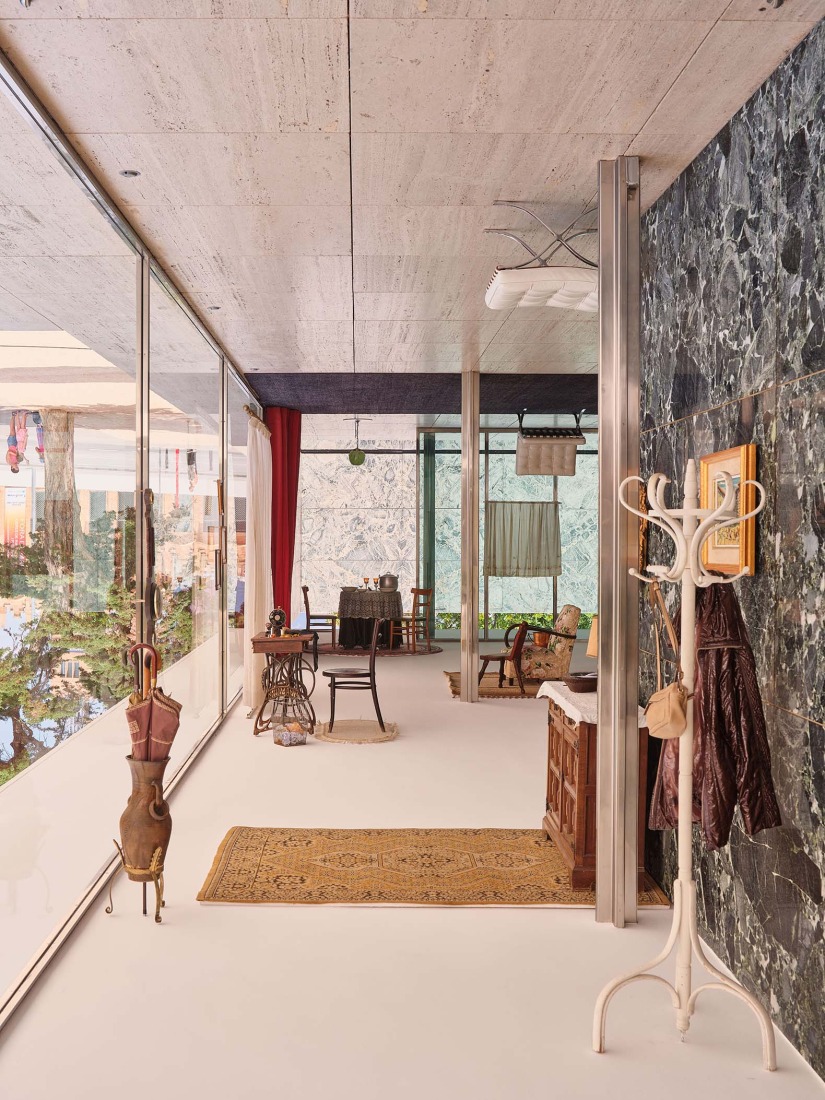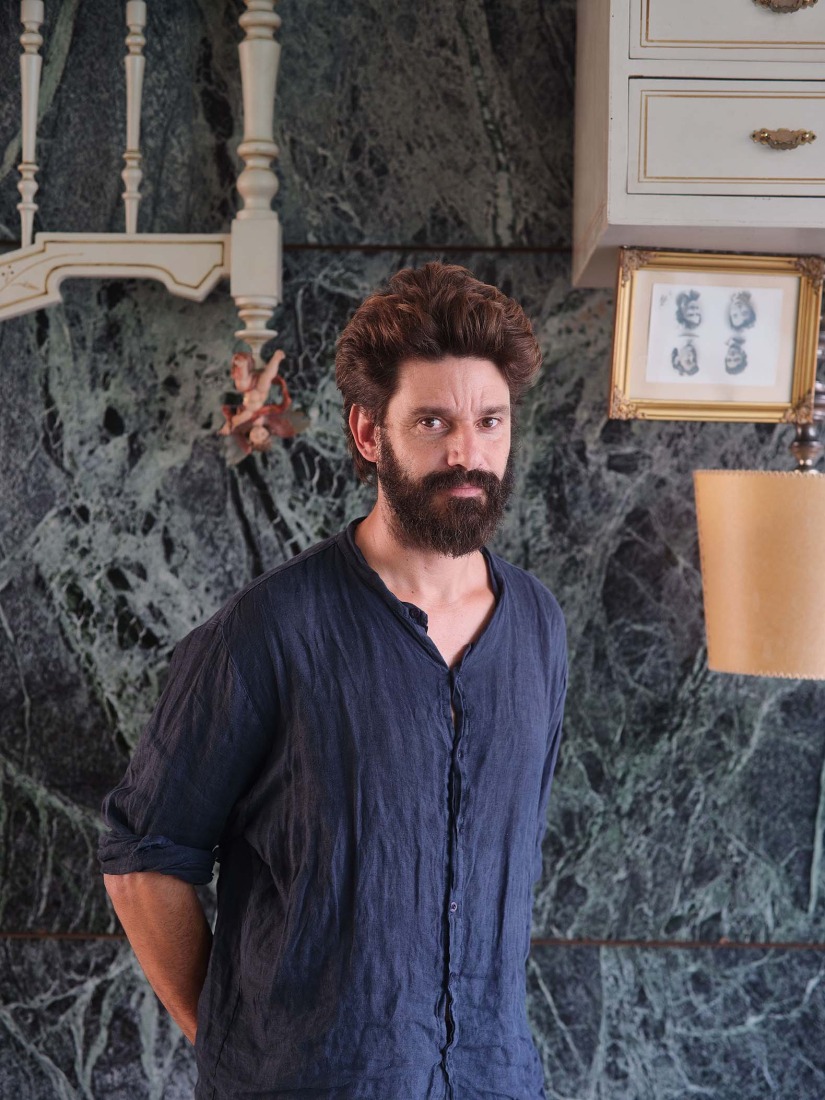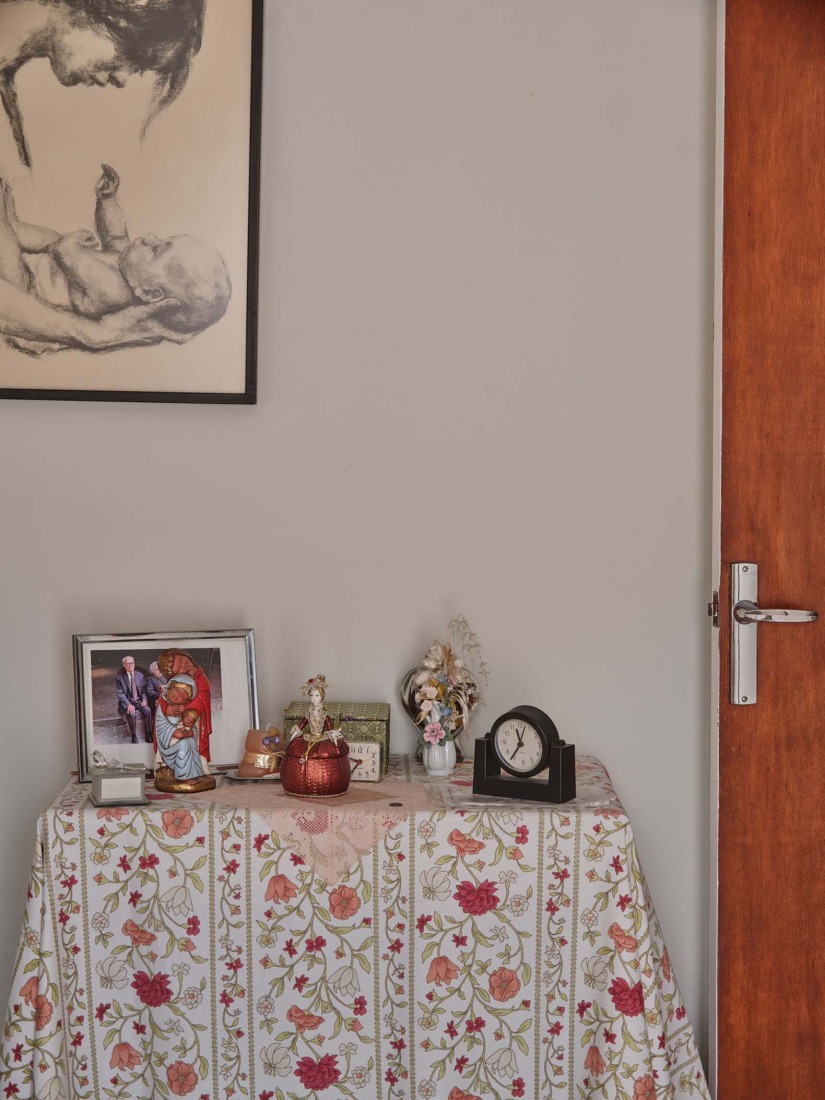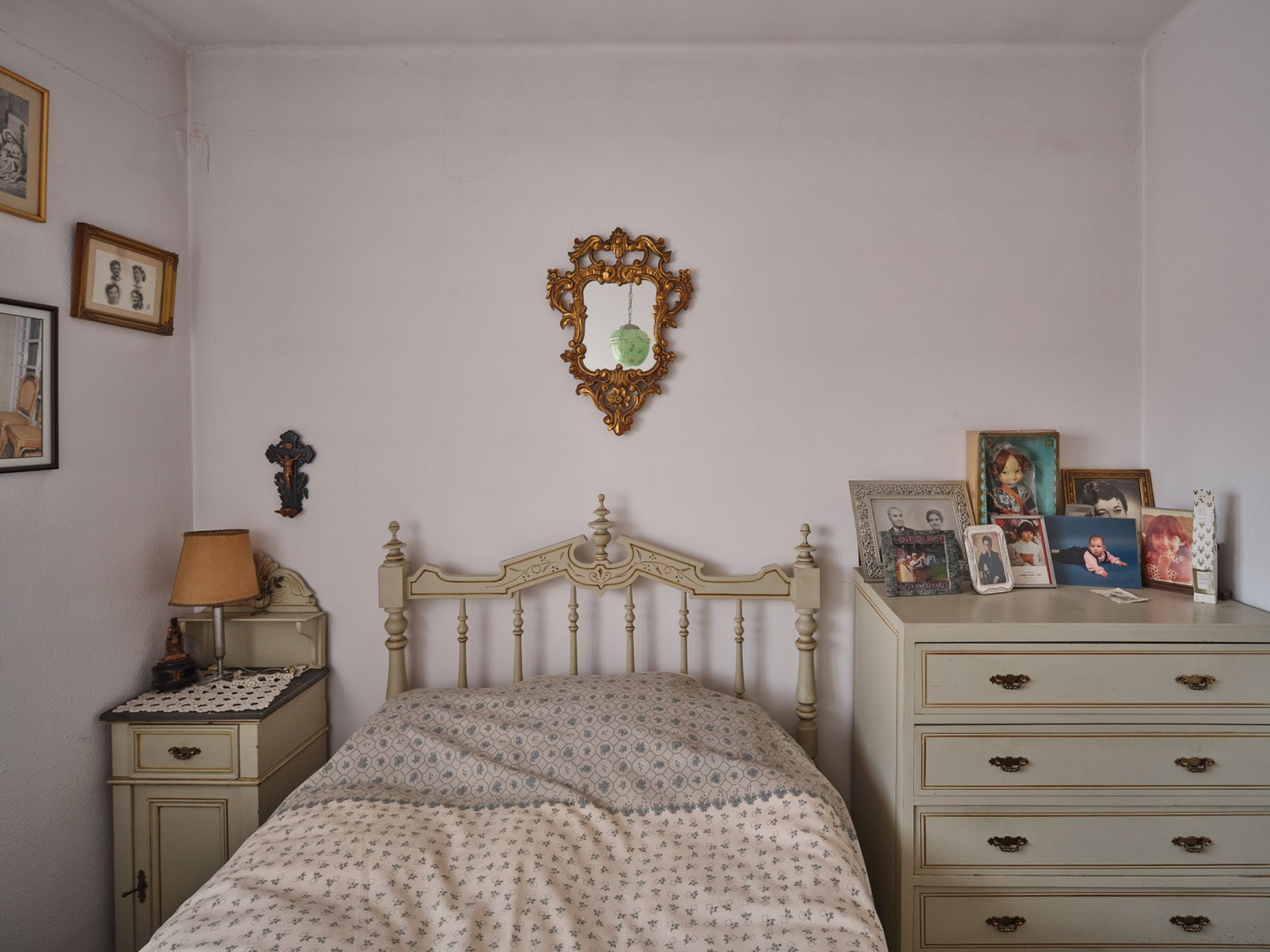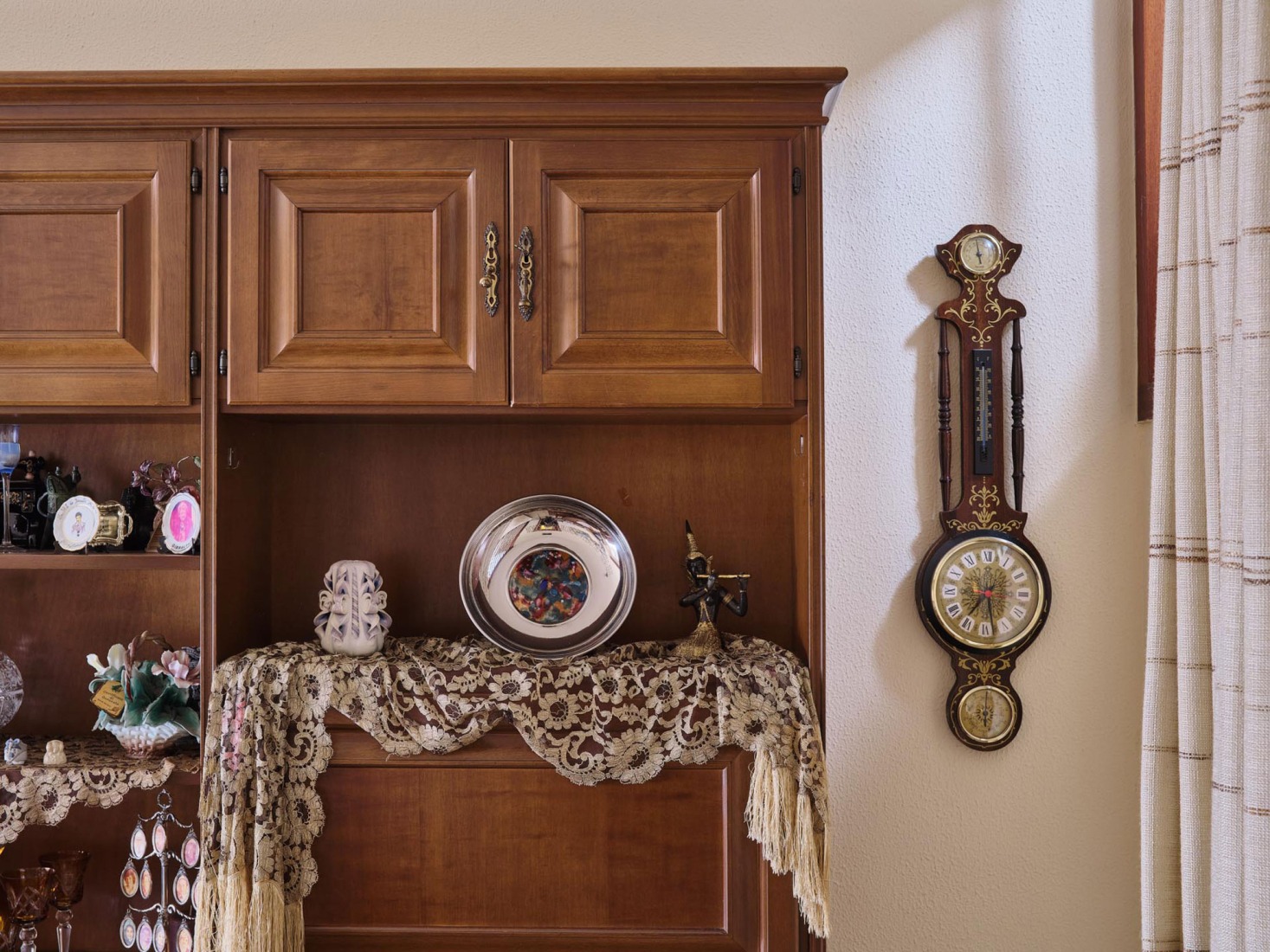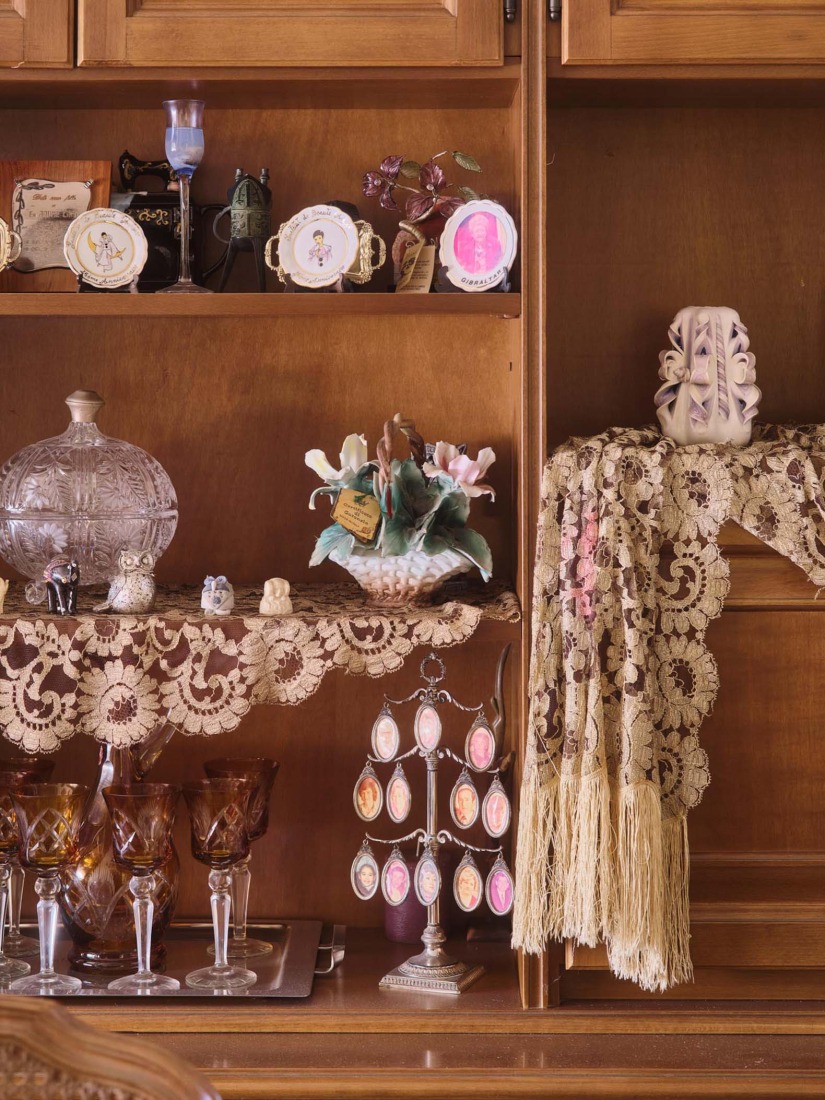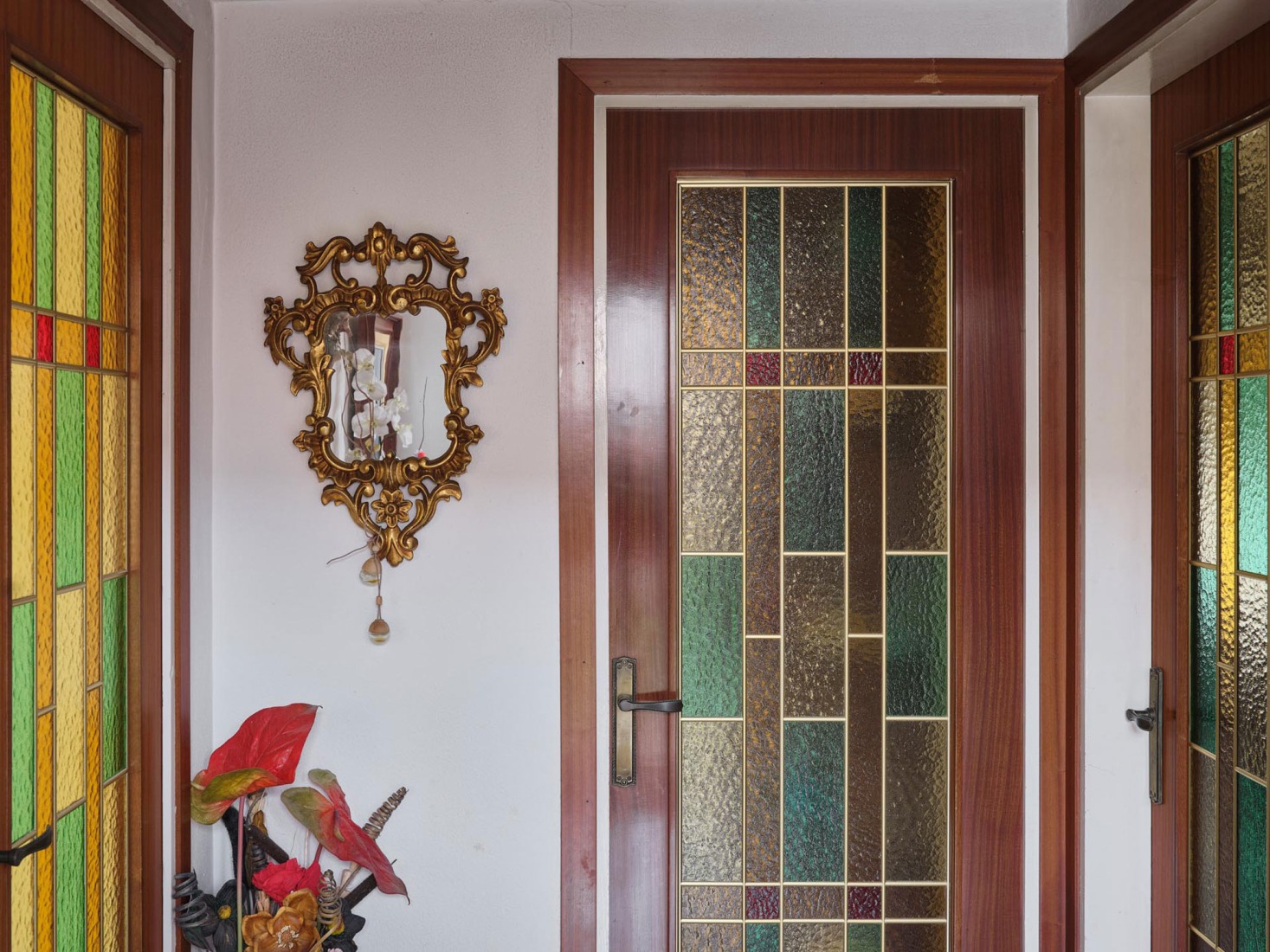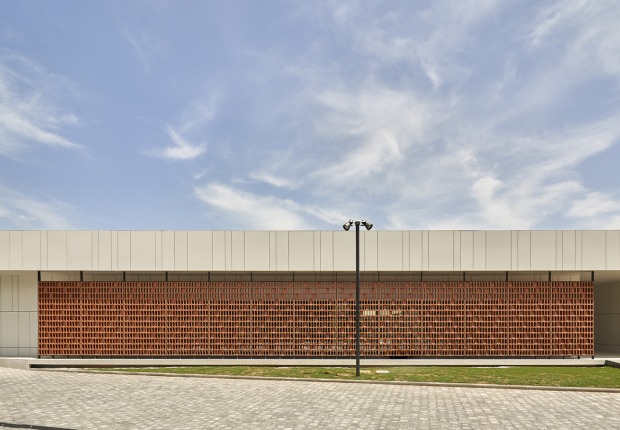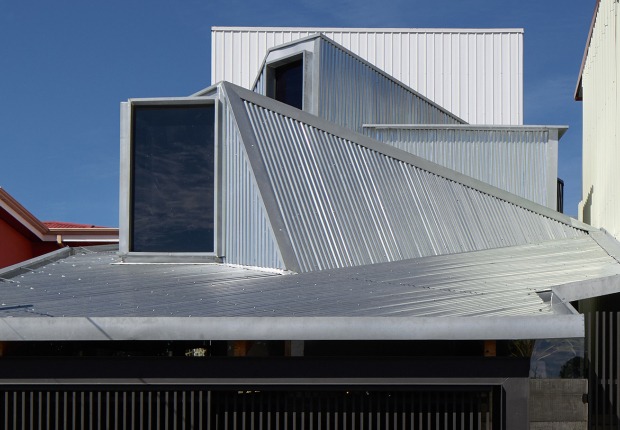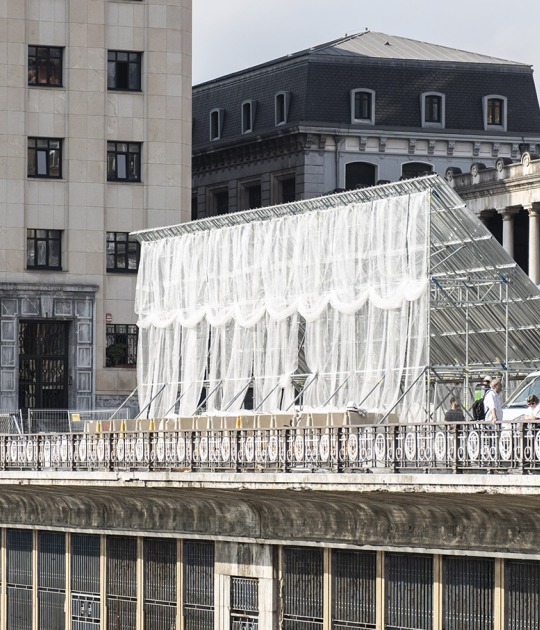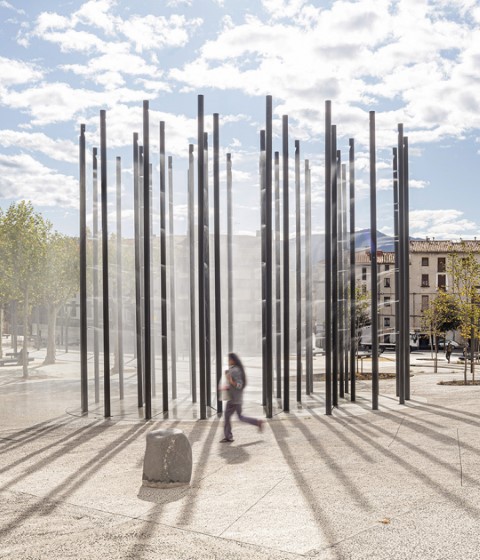Given this radical change of context proposed by Xevi Bayona, an inevitable question arises: what kind of domesticity can the Pavilion have?
"Architecture can make a space become domestic, to be inhabited. It is precisely the inhabitant themselves who, to make it domestic, use their belongings; personal possessions in the form of furniture and objects in which they deposit their soul to preserve a piece of their world."
Xevi Bayona.
Establishing a critical reflection on the pavilion's place-like status, more than twenty objects, such as a bed, a coat rack, and a table and chairs set, are installed on the Pavilion's ceiling, establishing a spatial decontextualization that facilitates the visual disappropriation commonly held by the Pavilion. Bayona's gesture, by introducing the objects that furnish a conventional house in Olot into the Pavilion, constitutes a poetic and provocative act that invites reflection on domesticity, space, and memory.
Such a radical decontextualization raises an inevitable question: what kind of domesticity can the Pavilion possess?
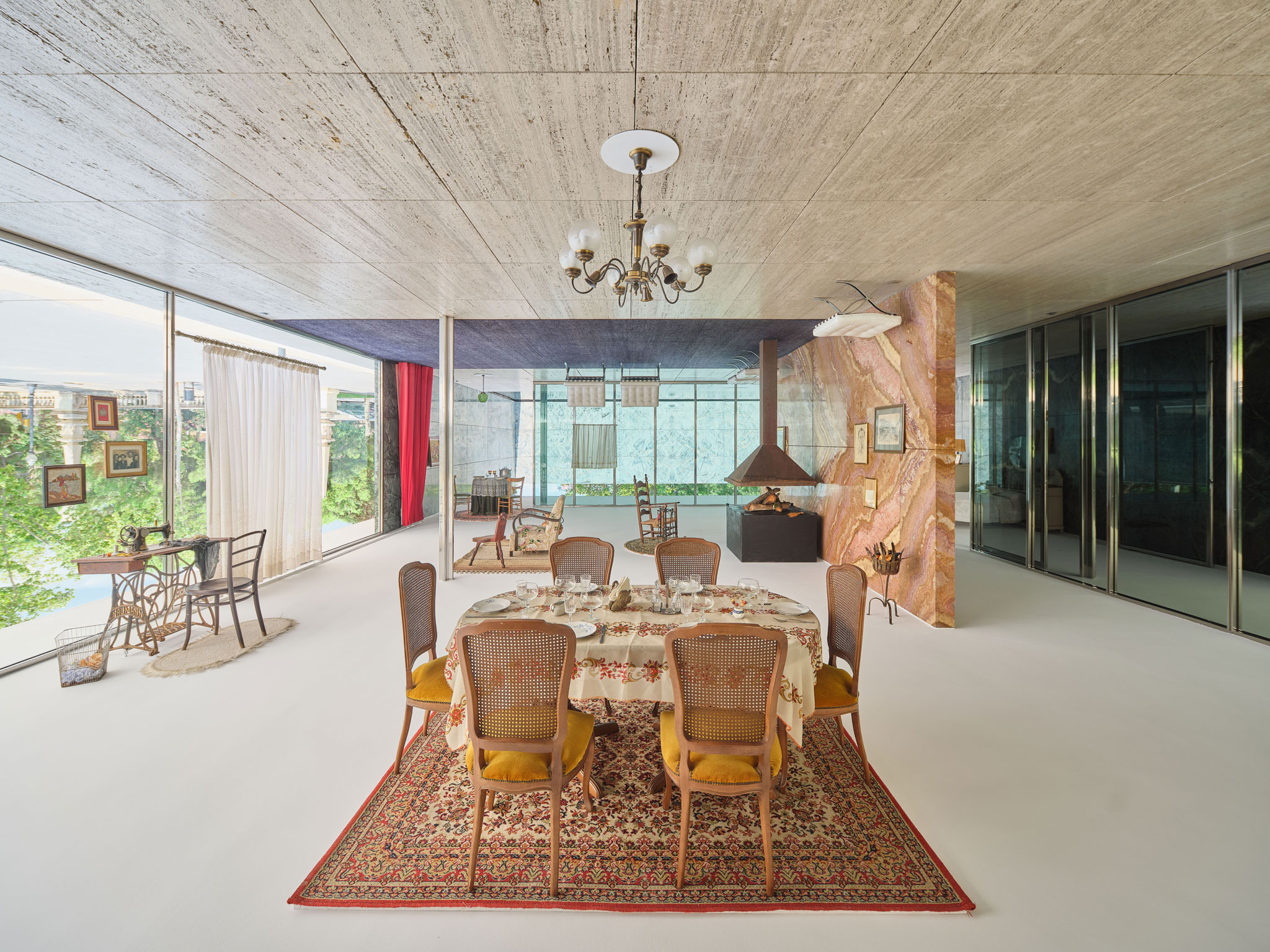
The Padrina and the belongings of domesticity by Xevi Bayona. Photograph by Adrià Goula.
Bayona established a vivid contrast between everyday objects and the material and geometric abstraction that defines the Pavilion. The intervention constructs a composition that disrupts the visual perception established by gravity, symbolically altering the world above and below, the sky and the earth, the white floor and the travertine ceiling, the water as a porch and the clouds as a carpet, the full and the empty. In short, a temporal alteration that modifies the Pavilion's capacity for habitation.
The proposal is presented as an exercise in comparison and contrast that uses metaphor to address universal themes such as life, death, memory, and identity. A compendium constructed from the figure of "The Padrina and the belongings of domesticity."

